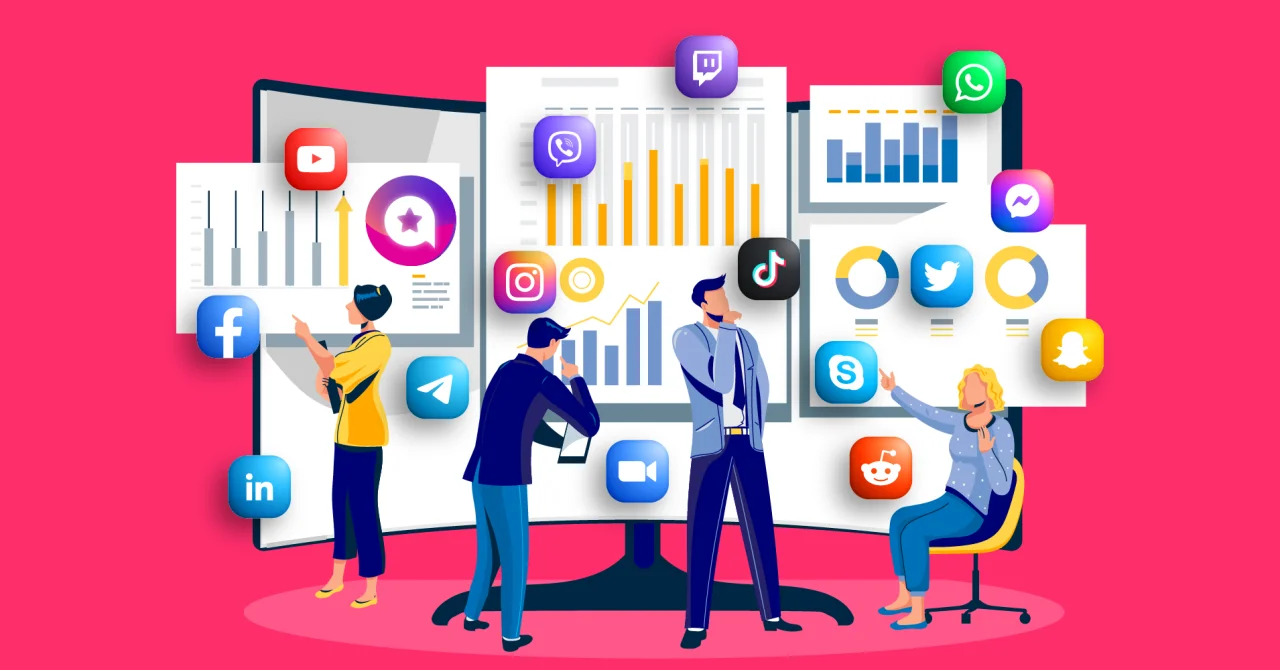Effective Social Media Marketing Strategies to Engage Your Audience

Introduction: Why Website Speed Matters in the Digital Age
In today’s hyper-connected world, website speed can make or break a business. Studies show that if a page takes more than three seconds to load, over 50% of users will abandon it. For businesses, this means a slow website not only frustrates visitors but also directly impacts conversions, sales, and brand credibility.
First Impressions and User Experience
Your website is often the first interaction customers have with your brand. A fast-loading website builds trust, while a slow one makes visitors think twice about engaging further.
The Link Between Website Speed and Business Success
Whether it’s an e-commerce store, a corporate site, or a portfolio, speed directly influences customer satisfaction, SEO rankings, and ultimately, revenue.
Understanding Website Speed
What Defines a Fast Loading Website?
A fast loading website is one that delivers its main content in under 2-3 seconds. Beyond speed, it also ensures smooth interaction without delays.
Common Metrics to Measure Speed (LCP, FID, CLS)
Google’s Core Web Vitals are key benchmarks:
- LCP (Largest Contentful Paint): How quickly the main content loads.
- FID (First Input Delay): How responsive the site is to user interaction.
- CLS (Cumulative Layout Shift): How stable the layout is while loading.
How Slow Websites Affect Performance
Higher Bounce Rates and Lost Visitors
Slow websites lead to higher bounce rates—visitors leaving before interacting. This signals to search engines that your site isn’t user-friendly.
Negative Impact on Search Engine Rankings
Google prioritizes user experience. A sluggish site can drop in rankings, making it harder to attract organic traffic.
Reduced Conversion Rates and Sales
Every extra second of delay can reduce conversions by up to 20%. For e-commerce, this could mean losing thousands in revenue.
Key Technical Factors Affecting Website Speed
Server Performance and Hosting
Poor hosting slows response times. A high-quality hosting provider ensures faster load times.
Image Optimization and File Compression
Uncompressed images are major culprits. Reducing file sizes improves speed without sacrificing quality.
Code Quality: CSS, JavaScript, and HTML
Bloated code delays rendering. Minification and clean coding practices enhance performance.
Use of Caching and Content Delivery Networks (CDNs)
CDNs distribute content globally, reducing delays for users in different regions.
Mobile Optimization for Speed
With mobile-first indexing, sites must load seamlessly on smartphones to retain users.
Proven Strategies to Improve Website Speed
Choosing Reliable Hosting Solutions
Investing in a high-performance server ensures quick response times.
Implementing Lazy Loading and Image Compression
Lazy loading loads images only when needed, speeding up initial load times.
Minimizing HTTP Requests
Combining files reduces the number of server requests, improving speed.
Using Browser Caching and CDNs
Storing elements locally and using CDNs ensures quicker access.
Leveraging Speed Testing Tools (GTmetrix, Google PageSpeed Insights)
These tools highlight issues and provide actionable recommendations for optimization.\
The Connection Between Website Speed and Bounce Rate
Why Visitors Leave Slow Websites
Patience is short online. Visitors expect instant access, and delays push them to competitors.
How Speed Improves User Engagement and Retention
Faster sites keep users browsing longer, lowering bounce rates and boosting conversions.
Case Studies: Bounce Rate Improvements After Speed Optimization
Businesses optimizing load times often see bounce rates drop by 30–50%.
Website Speed and SEO Rankings
Google’s Core Web Vitals and Ranking Signals
Google now uses speed as a core ranking factor, making it essential for SEO.
Faster Sites = Better Crawlability
Search engines crawl and index fast sites more efficiently.
Impact on Local SEO and Mobile Searches
Local businesses with fast mobile sites gain an edge in “near me” searches.
Web Professor’s Approach to Speed Optimization
Technical Audits and Performance Analysis
We identify bottlenecks slowing down your site.
Tailored Solutions for Fast Loading Websites
From code cleanups to CDN integration, every solution is custom-fit.
Success Stories: Helping Clients Reduce Bounce Rates
Our clients have seen increased retention, improved SEO rankings, and higher conversions.
Future of Website Speed and User Experience
Role of AI in Speed Optimization
AI will predict and preload user behavior for faster interaction.
Progressive Web Apps (PWAs) for Faster Loading
PWAs combine the speed of native apps with the accessibility of websites.
Anticipating New Search Engine Speed Requirements
Search engines will continue tightening speed standards for better UX.
FAQs on Website Speed and Bounce Rates
Q1. What is the most effective social media platform for audience engagement?
It depends on your target audience—Instagram and TikTok for younger users, LinkedIn for professionals.
Q2. How often should I post on social media?
Consistency matters more than frequency. Posting 3-5 times weekly is generally effective.
Q3. Can small businesses benefit from social media marketing?
Absolutely! Social media levels the playing field, allowing small brands to reach larger audiences.
Q4. How do paid ads affect engagement?
Paid campaigns boost visibility and can amplify organic engagement when targeted correctly.
Q5. What role does storytelling play in SMM?
Storytelling humanizes brands, creating deeper emotional connections with audiences.
Conclusion: The Critical Role of Fast Loading Websites in Digital Success
In the competitive digital landscape, speed is non-negotiable. Fast loading websites not only improve SEO but also reduce bounce rates, boost conversions, and enhance user trust.
By addressing technical bottlenecks and investing in performance optimization, businesses can future-proof their online presence. With Web Professor’s expertise, achieving a faster, smoother, and more engaging website is within reach.
👉 Don’t let slow speed cost you visitors. Optimize today for a faster tomorrow.
